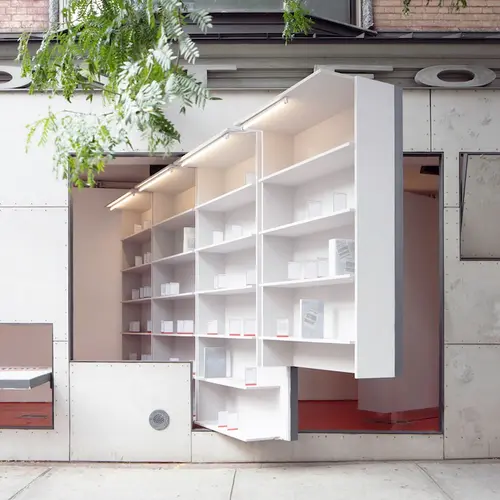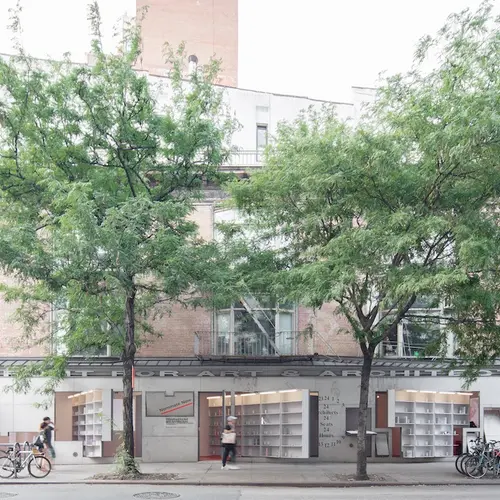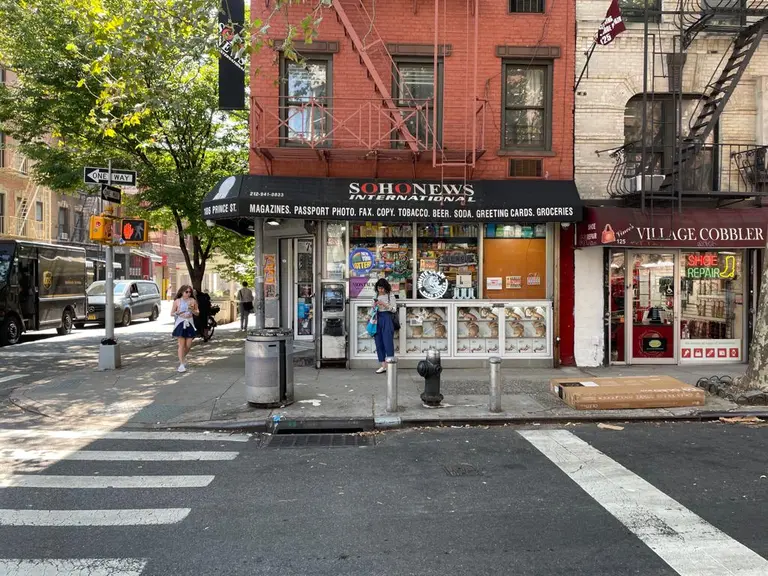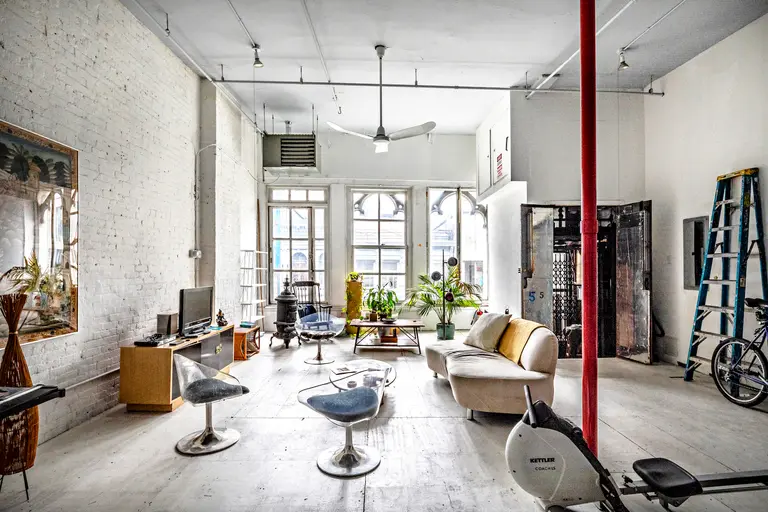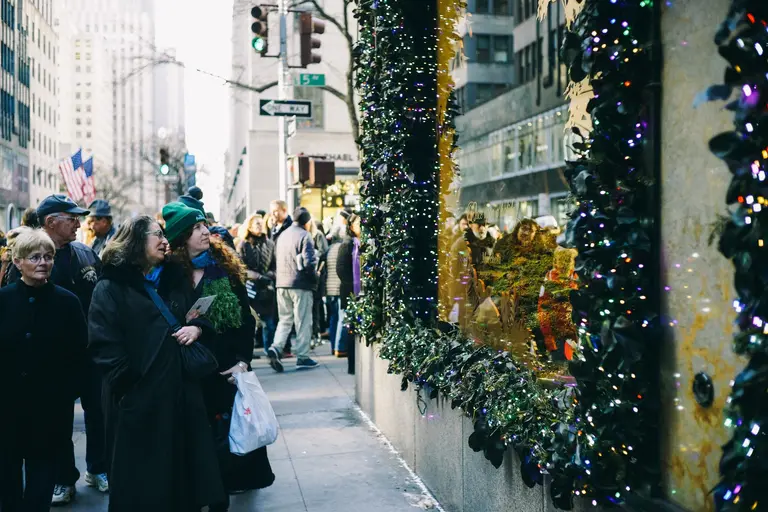Rotating panels at Storefront for Art and Architecture converted into shelves for books ‘yet to be written’
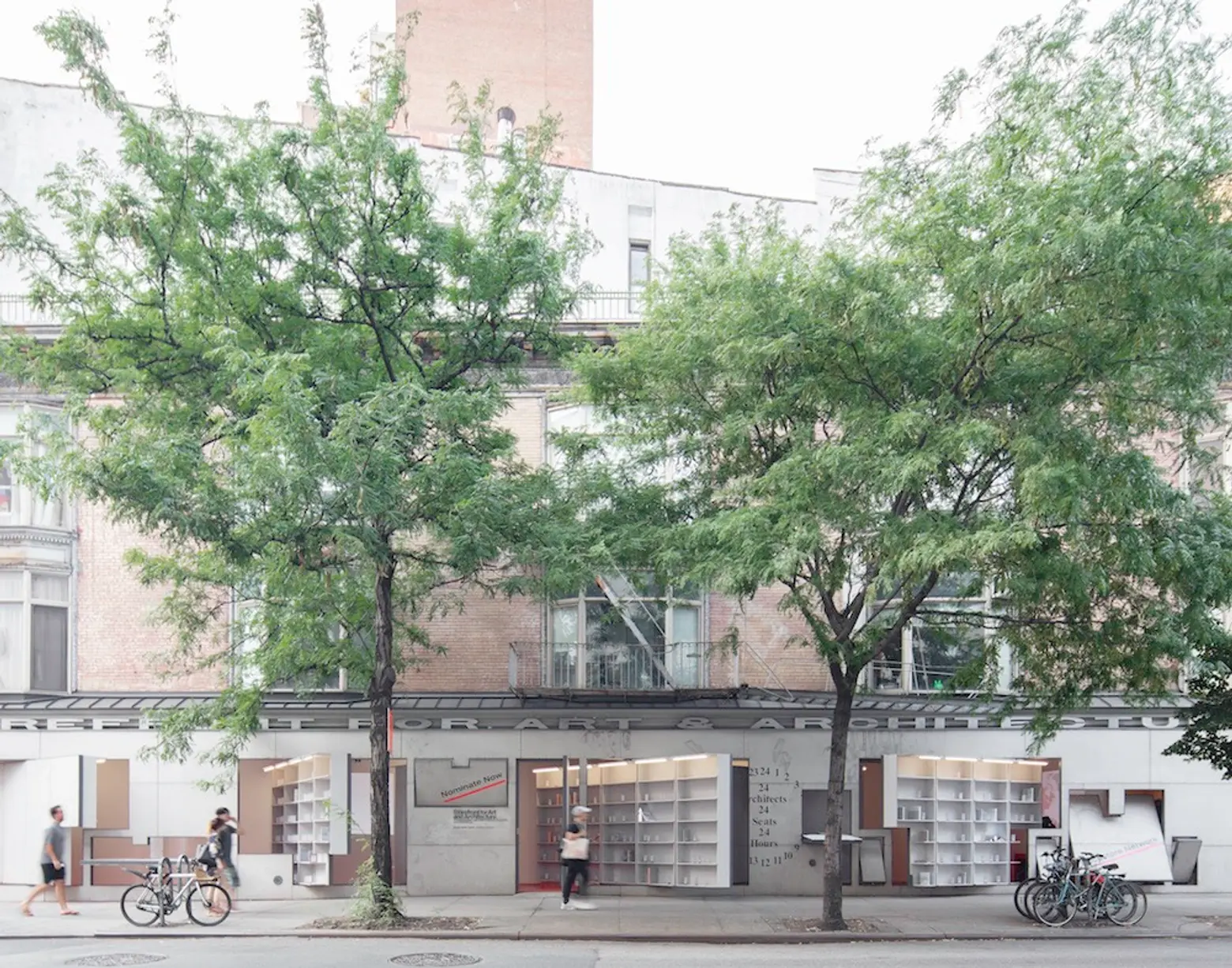
Photo by Naho Kubota
The iconic rotating facade panels at the Storefront for Art and Architecture have been reconstructed as mostly-empty bookshelves in an installation currently on view at the Soho gallery. Abruzzo Bodziak Architects (ABA) designed the sidewalk-encroaching shelves for the exhibition, dubbed Architecture Books-Yet to Be Written.
As its name suggests, the installation “seeks to celebrate and evaluate both existing and the missing volumes of a history still in the writing.” ABA’s design will be on display until August 25 as part of the New York Architecture Book Fair, an initiative introduced by the gallery.
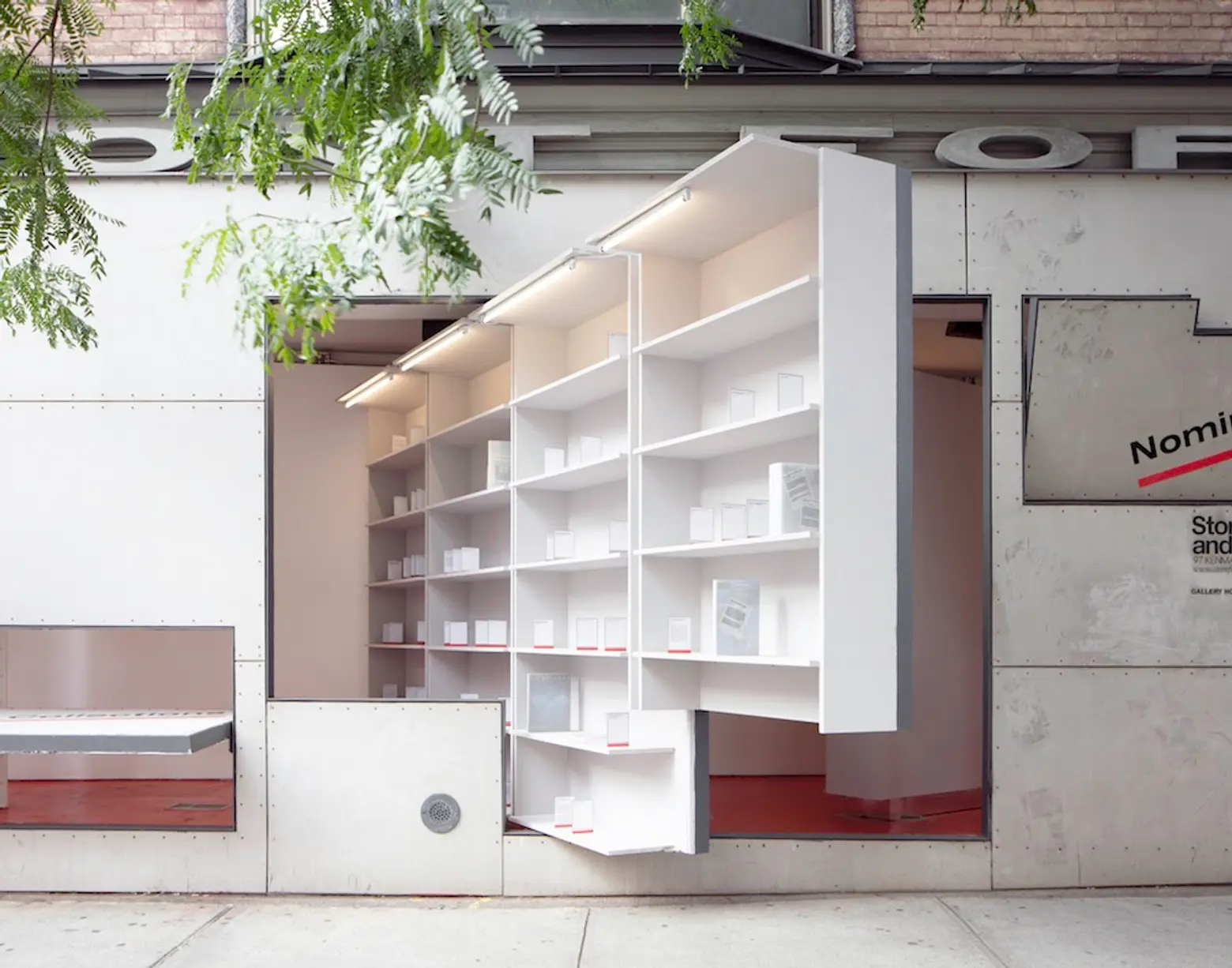
Photo by Naho Kubota
Artist Vito Acconci and architect Steven Holl first created the rotating facade in the early 1990s. The duo placed panels along the length of the exterior that can be opened, softening the line between public and private space.
ABA’s shelves, constructed of painted medium-density fiberboard (MDF), feature a selection of architecture books published over the last 35 years. Storefront launched a “Global Survey” to ask nearly 2,000 scholars, critics, museum directors and historians across 98 countries to contribute book nominations.
The chosen books for the shelves include brief statements to put them into context. Throughout the exhibit, additional books will be added through submissions from non-profits, students and gallery visitors.
The architects also designed five mirrored “Book Props” to designate the books chronologically. The acrylic prop is displayed with a book printed with a date on each page, organized by time period.
To remind us that many books remain unwritten, the bookshelf will stay relatively sparse. According to the gallery, the exhibition “provokes us to reimagine our personal collections, the existing infrastructures of cultural production and dissemination, and the algorithms that recommend our next reading material.”
RELATED:
